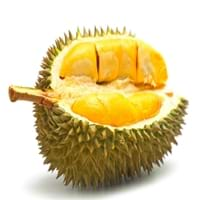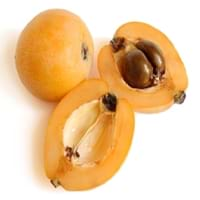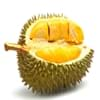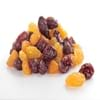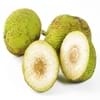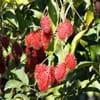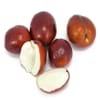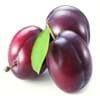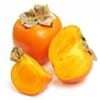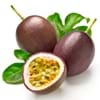Health Benefits
Anti depressant, Boosts immune system, Cancer prevention, Heart care, Reduces stress
Cancer prevention, Heart care, Reduces nervous tension, Reduces blood circulation problems, Reduces stress, Regulation of heart rate, Strengthening of bones
General Benefits
Anti oxidant properties, Anti-inflammatory properties, Boosts immune system, Controls blood pressure, Controls blood sugar levels, Digestive aid, Flu treatment, Strengthens bones
Anti-inflammatory properties, Controls blood pressure, Digestive aid, Eye care, Helps in weight loss, Improves eye vision, Maintains healthy cholesterol level, Strengthens bones
Skin Benefits
Anti-aging benefits, Brightens and lightens complexion
Anti-aging benefits, Reduces wrinkles, Treatment of dark spots, Treatment of skin diseases
Hair Benefits
Promotes longer and healthier hair, Protects hair
Protects hair
Allergy Symptoms
Diarrhea, Headaches, Hives, Nasal congestion, Red rash, Runny nose, Vomiting
Diarrhea, Itching of mouth, Nasal congestion, Sneezing, Swelling of face, Watery eyes
Side Effects
Affects blood glucose levels, Nausea, Stomach pain
Allergic reaction
Best Time to Eat
Along with meal, As a snack in the late afternoon, Don't consume at night and before bed, Morning time (before lunch)
Along with meal, As a snack in the late afternoon, Don't consume at night and before bed, Morning time (before lunch)
Vitamin B5 (Pantothenic Acid)
Not Available
Vitamin C (Ascorbic Acid)
Not Available
Phytosterol
Not Available
Calories in Fresh Fruit with Peel
Not Available
Calories in Fresh Fruit without Peel
Not Available
Calories in Frozen Form
Not Available
Calories in Dried Form
Not Available
Calories in Canned Form
Not Available
Calories in Juice
Not Available
Calories in Jam
Not Available
Type
Tree fruit, Tropical
Tree fruit, Tropical
Varieties
D24, D99 (Gob kecil), D123 (Chanee), D145 (Beserah), D158 (Gan Yau), D159 (Monthong), D169 (Tok Litok), D188, D189, D190, D163 (Hor Lor) and D164 (Ang Bak)
Ahdar, Ahmar, Asfar, Blush, Champagne, Early Red, Eulalia, Fire Ball, Golden Red, Golden Yellow, Oliver, Thales, Thames Pride, Victor and Wolfe
Color
Green
Orange, Yellow
Inside Color
Yellow
Orange
Taste
Creamy, Sweet
Sweet, Tart
Origin
South-Eastern Asia
China
Grows on
Not Available
Trees
Soil Type
Clay
Clay, Loam, Sand, Well-drained
Climatic Conditions
Hot, Humid
Warm to hot climate
Facts about
- 1 kg of durian contains 1350 calories which may cause weight gain.
- It may have a hyperthermic effect on the body, making you feel warmer.
- Study shows that durian has an ability to reduce infertility in men & women.
- Loquats are used in plum wine manufacturing.
- Dried leaves of loquat are used to make herbal tea.
- The seeds of loquat are slightly toxic & the symptoms of intoxication are nausea, vomiting & shortness of breath.
Top Producer
Thailand
Japan
Other Countries
Indonesia, Malaysia, Philippines
Brazil, Chile, China, Egypt, Israel, Italy, Morocco, Pakistan, Portugal, Spain, Turkey
Top Exporter
Thailand
Spain
Botanical Name
Durio zibethinus
Eriobotrya japonica
Synonym
Lahia Hassk
Crataegus bibas or Mespilus japonica or Photinia japonica
Subkingdom
Tracheobionta
Tracheobionta
Division
Magnoliophyta
Magnoliophyta
Class
Magnoliopsida
Magnoliopsida
Subclass
Dillenhidae
Rosidae
Family
Malvaceae
Rosaceae
Species
D. zibethinus
E. japonica
Generic Group
Not Available
Rose
Difference Between Durian and Loquat
We might think that Durian and Loquat are similar with respect to nutritional value and health benefits. But the nutrient content of both fruits is different. Durian and Loquat Facts such as their taste, shape, color, and size are also distinct. The difference between Durian and Loquat is explained here.
The amount of calories in 100 gm of fresh Durian and Loquat with peel is Not Available and 47.00 kcal and the amount of calories without peel is 147.00 kcal and Not Available respectively. Thus, Durian and Loquat belong to High Calorie Fruits and Low Calorie Fruits category.These fruits might or might not differ with respect to their scientific classification. The order of Durian and Loquat is Malvales and Rosales respectively. Durian belongs to Malvaceae family and Loquat belongs to Rosaceae family. Durian belongs to Durio genus of D. zibethinus species and Loquat belongs to Eriobotrya genus of E. japonica species. Beings plants, both fruits belong to Plantae Kingdom.
